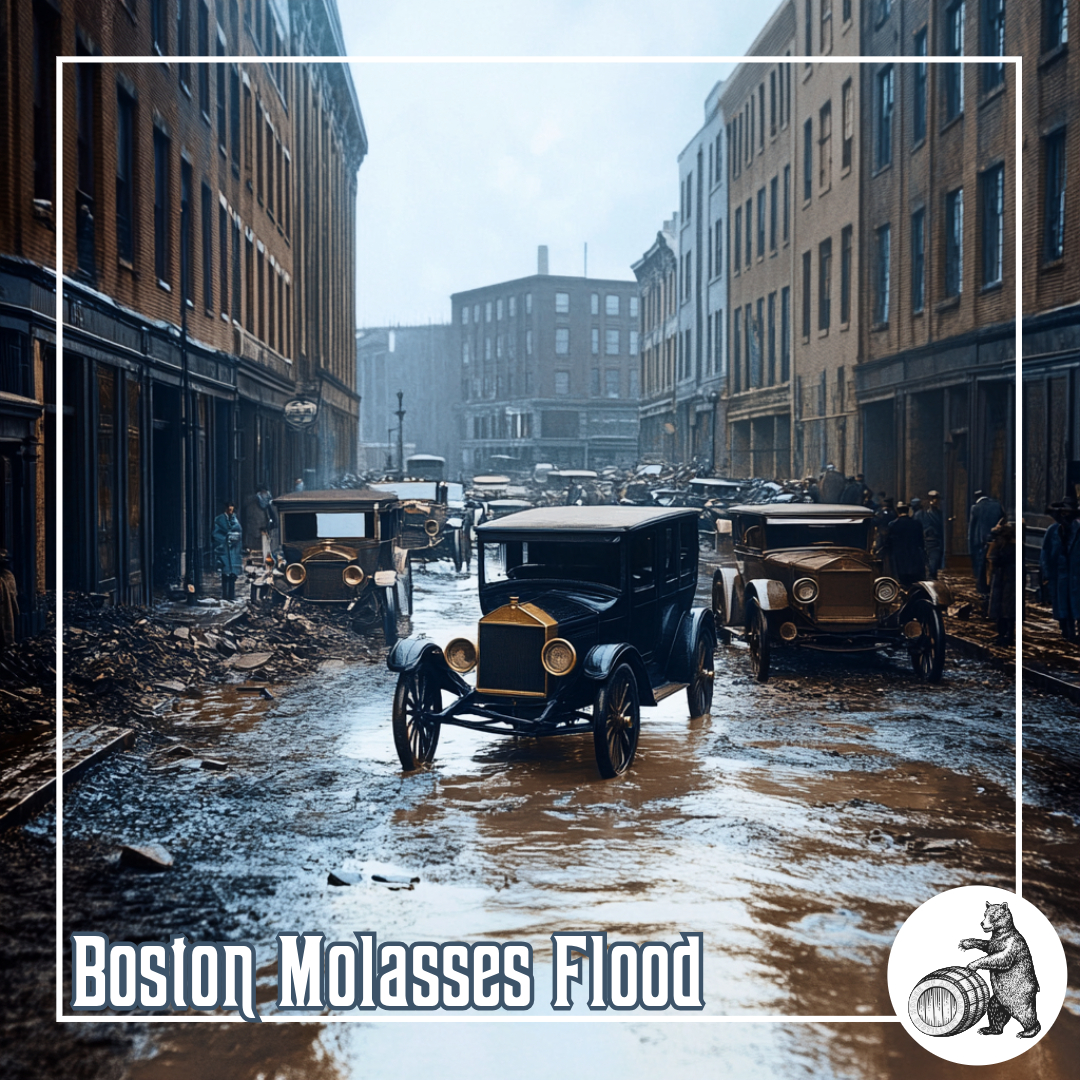The Great Boston Molasses Flood
The Purity Distilling Company’s molasses storage tank
In 1919, Boston stood as a hub of rum production in North America, with the Purity Distilling Company’s massive molasses storage tank symbolizing the city’s industrial prowess. However, on January 15th of that year, tragedy struck when this very tank, owned by the United States Industrial Alcohol Company, ruptured violently in the densely populated North End neighborhood.
The disaster was a culmination of several factors. The tank, with its substantial structural flaws, had been poorly maintained by its owners. A dramatic swing in temperatures exacerbated conditions: from a frigid -14°F (-25°C) to a relatively mild +41°F (5°C) within hours. This sudden warming sped up the fermentation process of the molasses inside the tank, generating carbon dioxide and increasing pressure against the tank’s walls. Unable to withstand the strain, the tank burst open shortly after noon, unleashing an astonishing 2.3 million US gallons (approximately 8,700 cubic meters) of molasses.
The rupture was catastrophic. Heavy iron components of the tank, some weighing over two tons, were hurled through the air, traveling distances of up to 220 yards (about 200 meters). Simultaneously, a towering wave of molasses, estimated to have been 25 feet (about 7.6 meters) high at its peak, surged forth at speeds of up to 35 mph (about 56 km/h). This deluge of thick, sticky syrup inundated the streets of Boston’s North End, engulfing everything in its path.
The consequences were devastating. Twenty-one lives were tragically lost, and an additional 150 people suffered injuries ranging from minor to severe. Entire buildings were obliterated, their foundations torn asunder by the sheer force of the molasses tsunami. One particularly large piece of debris from the tank’s collapse even caused a section of the Atlantic Elevated Railway to collapse, further compounding the chaos.
In the aftermath, rescue efforts were hampered by the unique challenges posed by molasses. The thick syrup coated everything it touched, making it exceptionally difficult to navigate and rescue victims trapped within its grip. Cleanup operations stretched over an arduous six-month period, during which time streets and buildings had to be meticulously scrubbed clean. The cleanup effort was further complicated by the fact that fresh water proved largely ineffective in washing away the molasses; instead, millions of gallons of saltwater had to be pumped from Boston Harbor to adequately dilute and remove the sticky residue.
Interestingly, amidst the devastation, an unexpected consequence emerged: the lingering scent of molasses. For decades after the disaster, residents of the North End would recall how the sweet, cloying aroma of molasses hung in the air, a poignant reminder of the catastrophe that had befallen their community.
Beyond its immediate impact, the Great Molasses Flood of 1919 sparked broader reflections on corporate accountability and industrial safety in America. The disaster underscored the need for stricter regulations and oversight of industrial operations, particularly those involving hazardous materials. It prompted a reassessment of business practices and regulatory frameworks, laying the groundwork for reforms aimed at preventing similar tragedies in the future.
Thus, while the Great Molasses Flood brought immense suffering and loss to Boston, it also left an indelible mark on the city’s history and catalyzed significant changes in industrial practices nationwide.
The Distilling Culture
BLOG
Embark on a global journey, and you’ll find that cultures possess tales that harken back to their ancient beginnings of distillation, brewing, and winemaking.
info@houseofapplejay.com
67 Fowler St, Bldg B, East Ellijay, GA 30540

